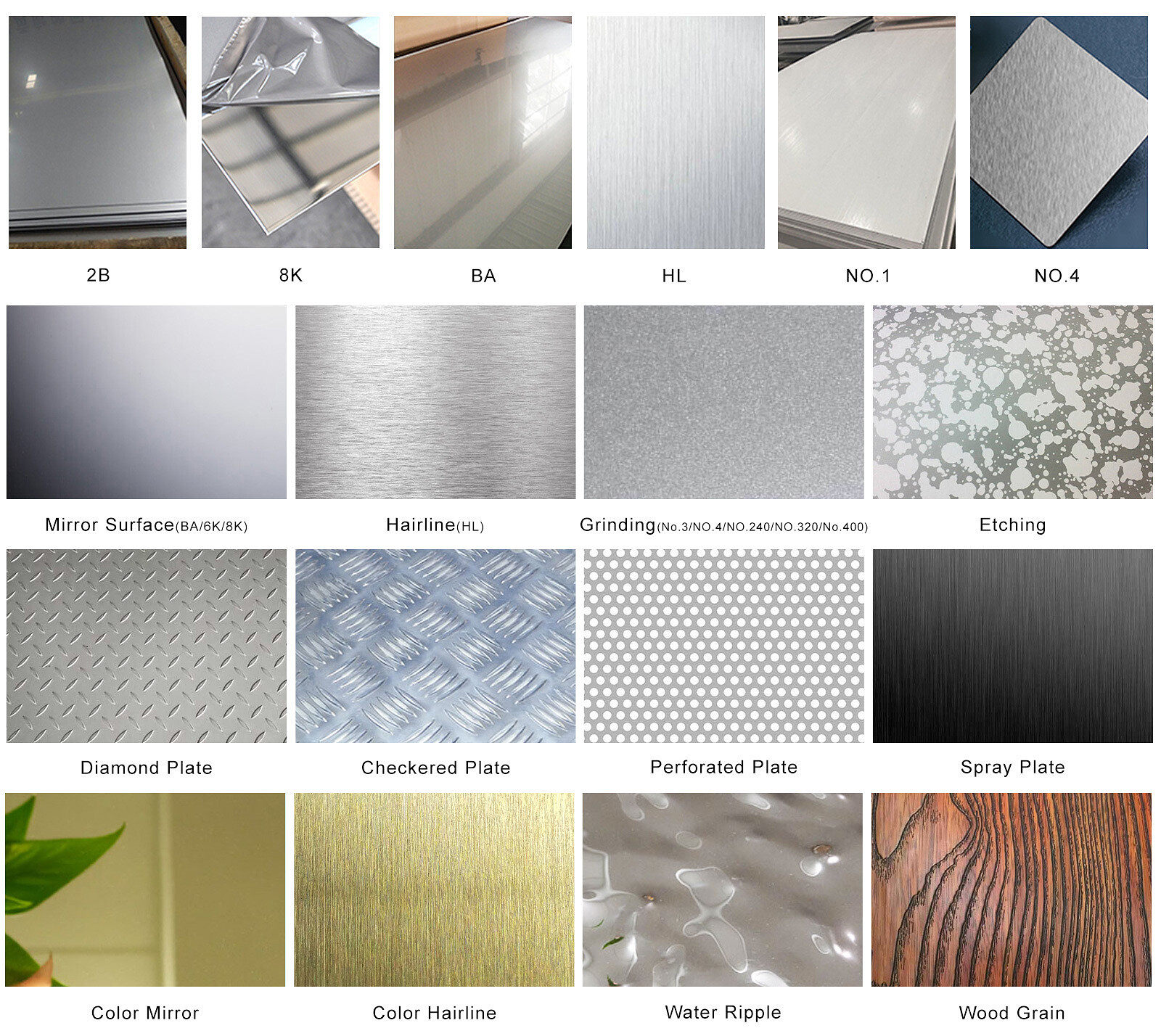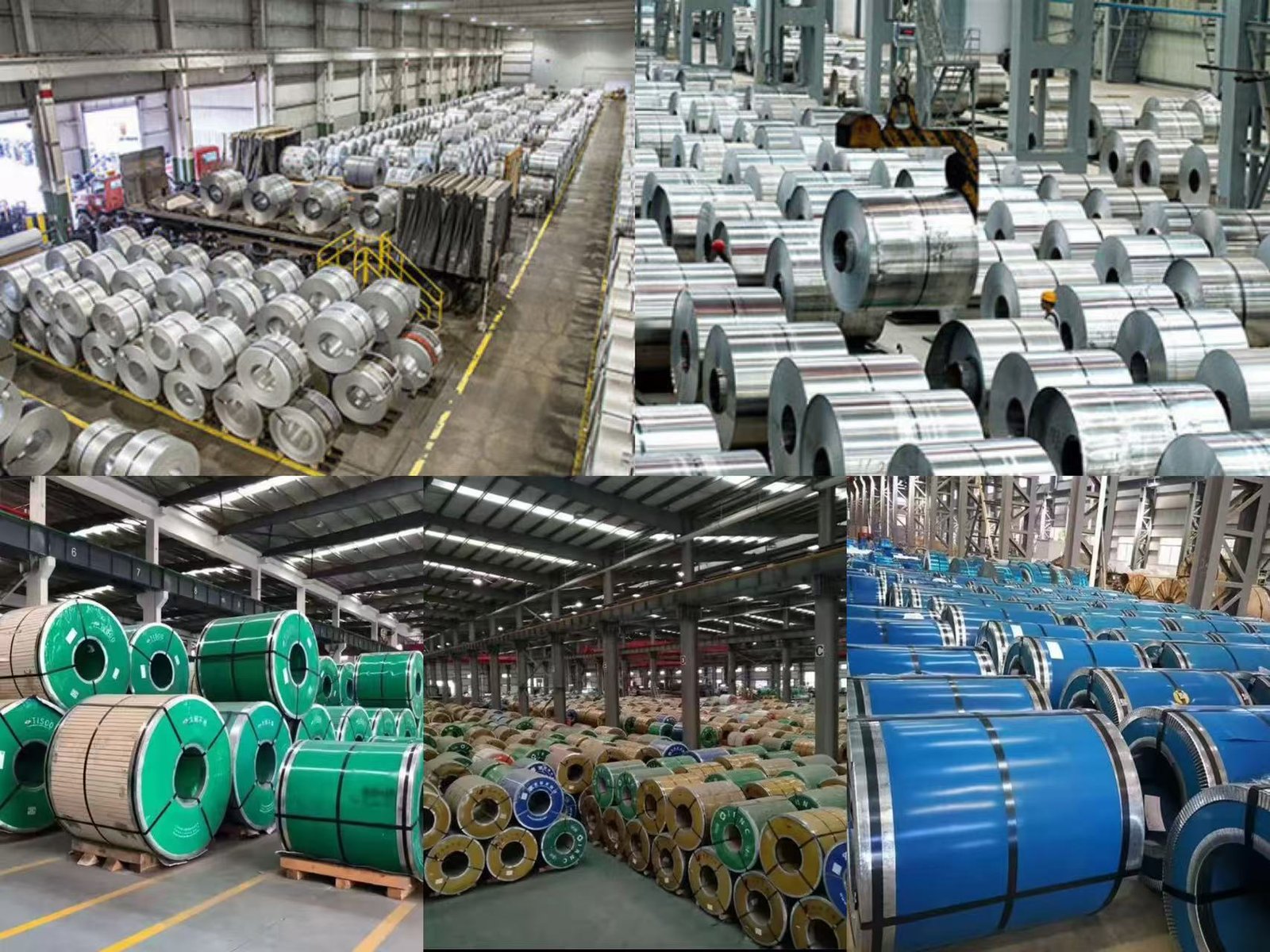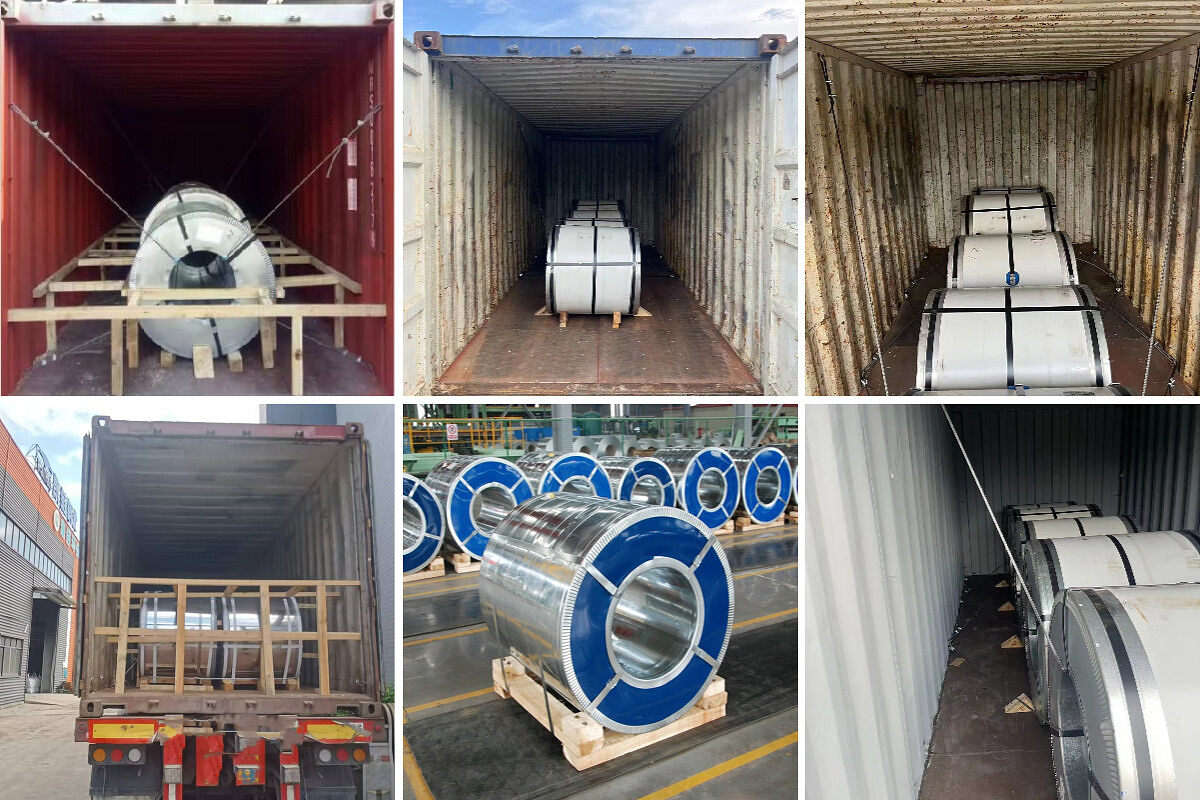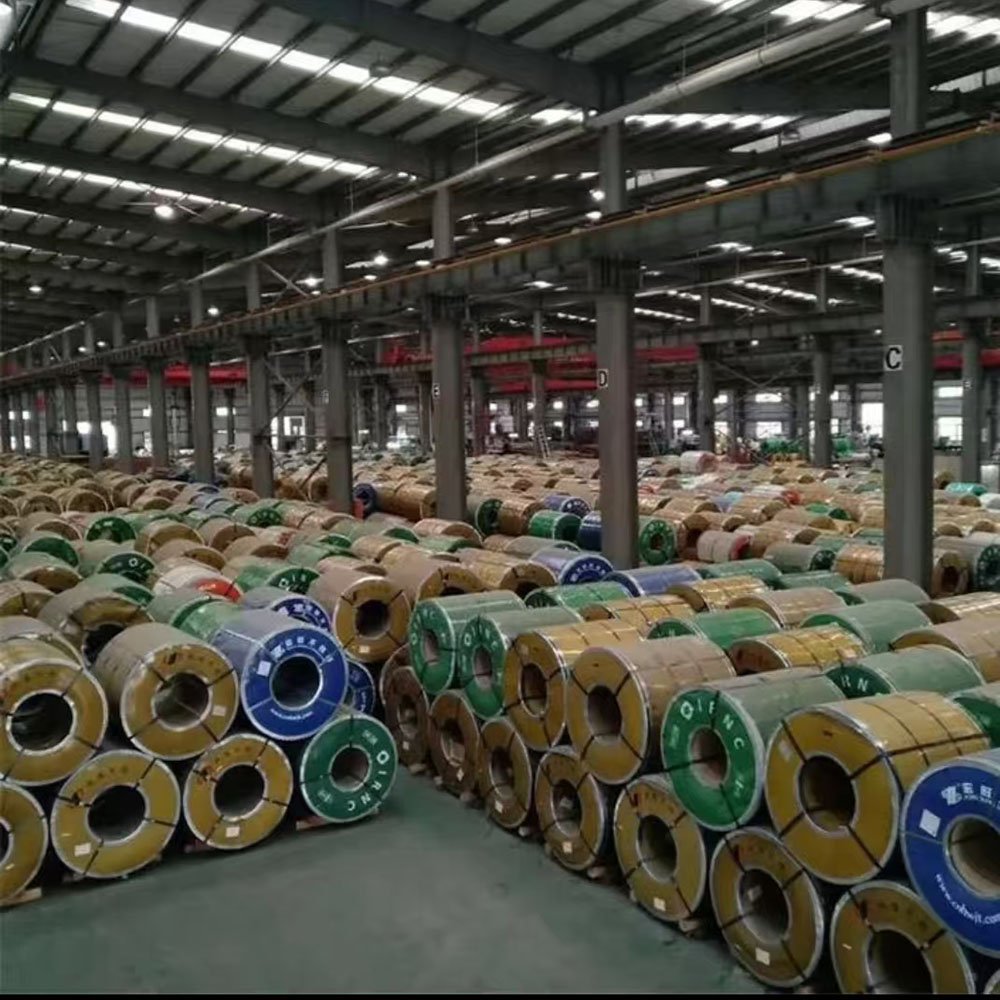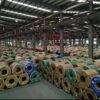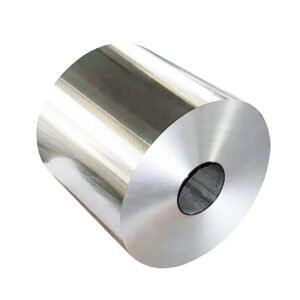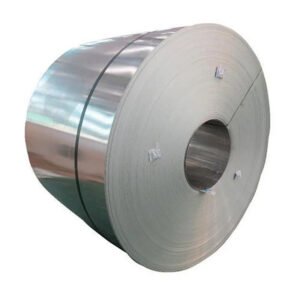SS304L stainless steel coil is a low-carbon stainless steel material, and its characteristics are mainly reflected in the following aspects:
Chemical composition:
The chemical composition of SS304L stainless steel coil is similar to that of standard 304 stainless steel, but its carbon content is lower, usually not exceeding 0.03%. This makes SS304L less likely to produce carbide precipitation during welding, thereby reducing the risk of intergranular corrosion.
Its main components include 18% chromium and 8% nickel, as well as other trace elements such as manganese, silicon, phosphorus and sulfur.
Physical properties:
Density: The density of SS304L stainless steel is about 7.85 g/cm3.
Magnetic properties: SS304L stainless steel is austenitic stainless steel and is usually non-magnetic.
Mechanical properties:
Strength: The tensile strength and yield strength of SS304L stainless steel are relatively high, and it can withstand large mechanical loads.
Plasticity: SS304L stainless steel has good ductility and plasticity, and can be formed and processed by cold working and hot working.
Hardness: SS304L stainless steel has moderate hardness and is easy to process and form.
Corrosion resistance:
SS304L stainless steel has excellent corrosion resistance and can resist corrosion from most corrosive media such as acids, alkalis, and salts.
In the presence of chloride ions, the corrosion resistance of SS304L stainless steel is better than that of standard 304 stainless steel because its low carbon content reduces the risk of intergranular corrosion
Thermal stability:
SS304L stainless steel has good thermal stability and can maintain its corrosion resistance and mechanical properties in high temperature environments. It is also relatively good in high temperature resistance, which can be as high as 1000-1200 degrees
Welding performance:
SS304L stainless steel has good welding performance and can be welded by common welding methods (such as arc welding, TIG welding, MIG welding, etc.). The welded joints have high strength and corrosion resistance
Application areas:
SS304L stainless steel coils are widely used in automotive accessories, hardware tools, petrochemicals, food industry, construction engineering, marine industry, nuclear power, aerospace, machinery manufacturing, container manufacturing, ships and bridges, etc.
| Nom du produit | Bobine/bande en acier inoxydable |
| Standard | ASTM,JIS,DIN,GB,AISI,DIN,EN |
| Matériau | 201, 202, 301, 301L, 304, 304L, 316, 316L, 321, 310S, 904L, 410, 420J2, 430, 2205, 2507, 321H, 347, 347H, 403, 405, 409, 420, 430, 631, 904L, 305, 301L, 317, 317L, 309, 309S 310 |
| Technique | Etiré à froid, laminé à chaud, laminé à froid et autres. |
| Largeur | 6-12mm ou personnalisable |
| Épaisseur | 1-12mm ou personnalisable |
| Longueur | 1000 - 6000mm ou personnalisable |
| Traitement de surface | BA/2B/NO.1/NO.3/NO.4/8K/HL/2D/1D |
| Origine | Chine |
| Code SH | 7219131200 |
| Délai de livraison | {Délai de livraison} |
| Service après-vente | 24 heures en ligne |
| Capacité de production | {Capacité de production} |
| Conditions de prix | EXW, FOB, CIF, CRF, CNF ou autres. |
| Port de chargement | {Port} |
| Délai de paiement | TT, LC, Cash, Paypal, DP, DA, Western Union ou autres. |
| Application | 1. Vaisselle, armoires, canalisations intérieures, chauffe-eau, chaudières, baignoires |
| 2. Pièces automobiles | |
| 3. équipements médicaux, matériaux de construction, produits chimiques, industrie alimentaire, agriculture, composants de navires, etc. | |
| Emballage | Emballage, sac en PVC, ceinture en nylon, serre-câble, emballage maritime standard pour l'exportation ou selon la demande. |
| Service de traitement | Pliage, soudage, décochage, poinçonnage, découpage et autres. |
| Tolérance | ±1% |
| MOQ | {MOQ} |
Composition de l'acier inoxydable
L'acier est un alliage de fer et de carbone. Les aciers inoxydables sont des aciers contenant au moins 10,5% de chrome, moins de 1,2% de carbone et d'autres éléments d'alliage. La résistance à la corrosion de l'acier inoxydable et
Les propriétés mécaniques peuvent être encore améliorées par l'ajout d'autres éléments, tels que le nickel, le molybdène, le titane, le niobium, le manganèse, etc.
| Grade | C | Si | Mn | P | S | Cr | Ni | Mo | N | Cu |
| 201 | ≤0.15 | ≤0.75 | 5.5~7.5 | ≤0.060 | ≤0.03 | 16.00~18.00 | 3.5~5.5 | – | – | 0.08 |
| 202 | ≤0.15 | ≤1.00 | 7.5~10.00 | ≤0.060 | ≤0.03 | 17.00~19.00 | 4.0~6.0 | – | ≤0.25 | |
| 301 | ≤0.15 | ≤1.00 | ≤2.00 | ≤0.045 | ≤0.03 | 16.00~18.00 | 6.00~8.00 | – | ||
| 302 | ≤0.15 | ≤1.00 | ≤2.00 | ≤0.035 | ≤0.03 | 17.00~19.00 | 8.00~10.00 | – | ||
| 304 | ≤0.07 | ≤1.00 | ≤2.00 | ≤0.045 | ≤0.03 | 18.00~20.00 | 8.00~10.50 | – | ||
| 304L | ≤0.030 | ≤1.00 | ≤2.00 | ≤0.045 | ≤0.03 | 18.00~20.00 | 9.00~13.00 | – | ||
| 310S | ≤0.08 | ≤1.00 | ≤2.00 | ≤0.045 | ≤0.03 | 24.00~26.00 | 19.00~22.00 | – | ||
| 316 | ≤0.08 | ≤1.00 | ≤2.00 | ≤0.045 | ≤0.03 | 16.00~18.00 | 10.00~14.00 | 2.00~3.00 | ||
| 316L | ≤0.03 | ≤1.00 | ≤2.00 | ≤0.045 | ≤0.03 | 16.00~18.00 | 12.00~15.00 | 2.00~3.00 | ||
| 321 | ≤0.08 | ≤1.00 | ≤2.00 | ≤0.045 | ≤0.03 | 17.00~19.00 | 9.00~13.00 | – | ||
| 430 | ≤0.12 | ≤0.75 | ≤1.00 | ≤0.040 | ≤0.03 | 16.00~18.00 | – | |||
| 2205 | ≤0.03 | ≤1.00 | ≤2.00 | ≤0.030 | ≤0.015 | 22.00~23.00 | 4.5~6.5 | 2.5~3.5 | ||
| 2507 | ≤0.03 | ≤0.08 | ≤1.20 | ≤0.035 | ≤0.015 | 24.00~26.00 | 6.00~8.00 | 3.0~5.0 | ||
| 904L | ≤0.02 | ≤1.00 | ≤2.00 | ≤0.045 | ≤0.035 | 19.00~23.00 | 23.00~28.00 | 4.0~5.0 | 1.0~2.0 | |
| INCONEL028 | ≤0.03 | ≤1.00 | ≤2.50 | ≤0.030 | ≤0.030 | ≤28.0 | ≤34.0 | ≤4.0 | ≤1.4 | |
| MONEL400 | ≤0.30 | ≤0.5 | ≤2.00 | – | ≤0.024 | – | ≥63.0 | – | ≤34.0 | |
| INCONEL800 | ≤0.10 | ≤1.00 | ≤1.50 | – | ≤0.015 | ≤23.0 | ≤35 | 4.0~5.0 | – | ≤0.75 |
Sélection de la surface
